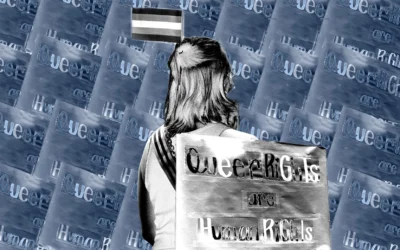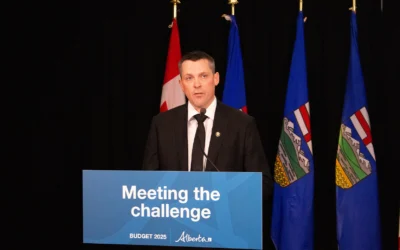In the 19th century, “rainmakers” were men who claimed that they could create precipitation using their own personal and secret methods. According to The Wichita Eagle, these men would travel to drought-stricken areas and charge the local government with the promise of rain on demand. These probable precipitation con men, who The Wichita Eagle claims were known historically as “flimflam men,” would occasionally strike it big. Like in 1915 when, according to The San Diego Union Tribune, the City of San Diego agreed to pay Charley Hatfield, the self-dubbed “Moisture Accelerator,” $10,000 to fill the Moreno reservoir. That is the equivalent of about $260,000 USD today. Hatfield’s methods seemed to work: he has been blamed for what the L.A. Times refers to as the “Hatfield Flood,” which supposedly killed as many as 50 people.
Thirty-one years later, in 1946, “flimflam men” and moisture accelerators like Charley Hatfield were a thing of the past, a discredited oddity. According to The Chicago Tribune, it was in 1946 that Vincent J. Schaefer and his partner, Irving Langmuir, were working at General Electric Research Laboratories in Schenectady, New York. It was here that they conducted what the Encyclopedia Britannica refers to as the Schaefer-Langmuir Experiments: Schaefer exposed dry ice to supercooled water vapour, causing the vapour to form many tiny crystals and fall. They had just invented a new form of weather modification: cloud seeding.
Physicist Bernard Vonnegut was, according to The New York Times, a colleague of Schaefer and Langmuir. The New York Times confirms that he worked at the General Electric Research Laboratories during the same time period; the 1940’s. In 1947, Vonnegut published a paper entitled The Nucleation of Ice Formation by Silver Iodide in The Journal of Applied Physics No. 18. Vonnegut had discovered silver iodide as an extremely effective way to seed clouds to generate precipitation. It provides a base on which ice crystals can latch to and formulate on. This is how cloud seeding theoretically works: silver iodide and dust are released into the atmosphere, which causes water to precipitate and fall in the form of rain or snow.
According to Climate Viewer News, as of 2014, silver iodide is still used in cloud seeding. Vonnegut’s work would go on to inspire his brother, Kurt (yes, that Kurt), to write about “ice-nine” in his novel Cat’s Cradle.
In the 20th century, cloud seeding still has a reputation for being the pastime of flimflam men. In 2018, the journal Science, which published another one of Bernard Vonnegut’s cloud-seeding research papers entitled Ice Nucleation by Coprecipitated Silver Iodide and Silver Bromide in November of 1971, ran a piece by Angus Chen entitled “Does cloud seeding really work? An experiment above Idaho suggests humans can turbocharge snowfall,” that opened with “Cloud seeding — sowing clouds with small particles to make them rain or snow — has a reputation as dodgy as the weather.” This fundamental distrust of cloud seeding is not helped by some conspiracy theorists, who categorize cloud seeding as a form of malicious weather modification, or chemtrails.
A 2011 survey by A. M. Mercer, D. W. Keith, and J. D. Sharp, which was published in Environmental Research Letters entitled “Public understanding of solar radiation management” asked 3,105 people from Canada, the United Kingdom, and the United States about weather modification and geoengineering. Out of the sample population, 16.6 per cent, or 515 people, said they believe that “governments are already distributing chemicals in the atmosphere for a variety of purposes, ranging from culling the population to mind control.” Although 515 is a relatively small number of individuals, 16.6 per cent of a sample population is an indicator of a greater trend of weather-related conspiracy theories.
The survey doesn’t elaborate specifically the direct connection between cloud seeding and conspiracy theorists. However, strong links between conspiracy ideologies and cloud seeding have been found. In the Guardian article “My month with chemtrail conspiracy theorists” by Carey Dunne, one of the conspiracy theorists she interviews, Tammi Reidl, claims that chemtrails are “a toxic cocktail of aluminum, strontium and barium sprayed from planes in a plot to control the weather, the population and our food supply.” To further solidify the link between cloud seeding and chemtrails, Reidl later confers on chemtrail purposes and methodologies: “to mitigate global warming, mysterious airplanes spray chemicals into the atmosphere to form sun-blocking artificial cloud cover.” Within the context of cloud seeding to help subdue the effects of climate change, Reidl is not far off, however her beliefs about which chemical compounds are sprayed in the air and their effects are incorrect.
To Terry Krauss, doctor of atmospheric sciences, the mysterious and historically peculiar science of cloud seeding is just part of his nine-to-five. Krauss, a Red Deer-based meteorologist, is the Project Director of the Alberta Severe Weather Management Society (ASWMS). The ASWMS is a private enterprise founded in 1996 by several insurance companies as a response to the 1991 Calgary hailstorm, which, according to a statistic published by Desjardins Insurance, resulted in “62,000 claims for $342 million.” The ASWMS’s mandate is hail suppression within Alberta’s ‘hailstorm alley,’ which covers an area just south of Calgary up to north of Red Deer.
When Krauss was contacted, he said that due to his position as Project Director of the ASWMS, he is not allowed to speak without prior media authorization. In lieu of direct quotes, he provided the slides to a statistics-based presentation he regularly tours around Canada. The presentation is entitled “Alberta Hail Suppression Project.” On the slide “Canada’s Hail Problem,” Krauss states that “two-thirds of Canada’s major documented hail storms have occurred in Alberta.” The presentation lists the Fargo, North Dakota-based Weather Modification International (WMI) as the company that does the cloud seeding. WMI uses three Beechcraft and two Cessna aircraft to seed the clouds with silver iodide. According to the presentation, hail suppression functions by launching silver iodide into the atmosphere, causing “beneficial competition with more ice embryos.” This seeding allows for more opportunities for ice crystals to form, shrinking the ultimate size of the hail by expanding the number of hailstones formed.
The World Meteorological Organization’s Expert Team on Weather Modification Research’s stance on cloud seeding for hail suppression, as found on their website, is that “scientific evidence to date is inconclusive and evaluation of the results has proved difficult and the effectiveness remains controversial.” This is in direct contrast to a 1986 study by the Alberta Research Council (ARC) entitled “Weather modification in Alberta: summary report and recommendations,” which found that “seeding clouds with either silver iodide or dry ice is effective in producing high ice crystal concentrations.” Krauss’s presentation deals with this discrepancy carefully; the presentation is very clear that “hail is reduced, not eliminated. Storm severity, cloud seeding timing, and location are very important and add to the complexity.”
Today, there is criticism towards modifying natural states, from GMO’s to anti-vaccination movements. What doesn’t help cloud seeding’s case is its use of airplanes. According to the Centre for Biological Diversity’s page on “Airplane Emissions,” airplanes are projected to “generate 43 gigatonnes of planet-warming pollution through 2050, consuming almost 5 percent of the world’s remaining carbon budget.” The airplanes used for cloud seeding in Alberta specifically will only generate a tiny fraction of this projected pollution, because, as mentioned in Krauss’s presentation, they are small Beechcraft and Cessna aircraft. What if airplanes could be used to fight the very thing they are contributing to — climate change — using cloud seeding? Blaž Gasparini, a scientist working at the University of Washington in Seattle, is one of only five researchers worldwide working on a new method of cloud seeding.
This new method targets cirrus clouds, which, according to Gasparini, are “transparent” clouds that differ from normal clouds. “Normally, if a cloud happens to get over your head, it gets colder. This is different. Cirrus clouds are very thin … what they do is something similar to what greenhouse gasses do,” says Gasparini. Gasparini continued to elaborate on how cirrus clouds trap “radiation that the earth is emitting, keeping the planet a little bit warmer.” It stands to reason then, says Gasparini, “that we might start thinking about how to decrease their effects.” This would be done by seeding the clouds to reduce the amount of cirrus clouds in our atmosphere, and consequently, “we should have less of a warming effect from those clouds.” Aircraft, a cause of emissions, would seed cirrus clouds to help deter the effects of those same harmful gases and compounds.
Cloud seeding to fight some of the atmospheric heating caused by greenhouse gas emissions gains some credibility because of one key point that Gasparini wants to make: “I think maybe nature is already doing some of this on her own.” The effects of dust from Asia which lands in high altitudes in Canada, or events like volcanic eruptions, may be studied to reveal the global cooling effect of particulates in our upper atmosphere, says Gasparini.
But this new theory is not without its issues. As of 2020, cirrus cloud seeding has not been tested outside of the laboratory. “It’s a very long process chain, and with any type of long process chain, we aren’t quite sure that it would work very well in nature,” said Gasparini. Not only that, but there are potentially negative side effects that still need to be explored, said Gasparini, like how cirrus seeding would “change precipitation patterns,” leading to “more extreme precipitation events.” The ASWMS may have its work cut out for it.
Cirrus cloud seeding, ultimately, is a solution that would buy us more time. “You need to keep doing it for a very long time, and if you suddenly stopped doing it, you would get back those clouds, and you would go back along your warming trajectory, which goes more or less with the increases in carbon dioxide emissions,” said Gasparini, emphasizing the idea that cirrus seeding is meant to be more of a band-aid solution. But cloud seeding is still a legitimate hope to fight climate change in the future: “as opposed to some other methods of artificially modifying the climate … cloud seeding will have less bad side effects.” Chemtrails might just be the thing that gives humanity an extra few minutes on the doomsday clock as we work on solving how to heal our dying planet.
Images courtesy of rawpixel.





0 Comments